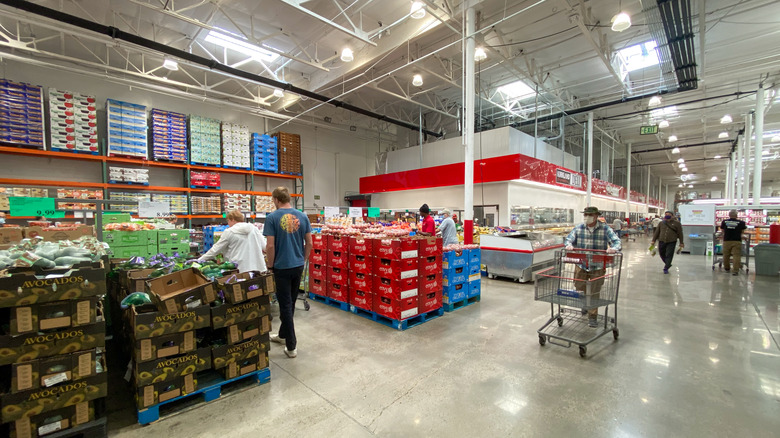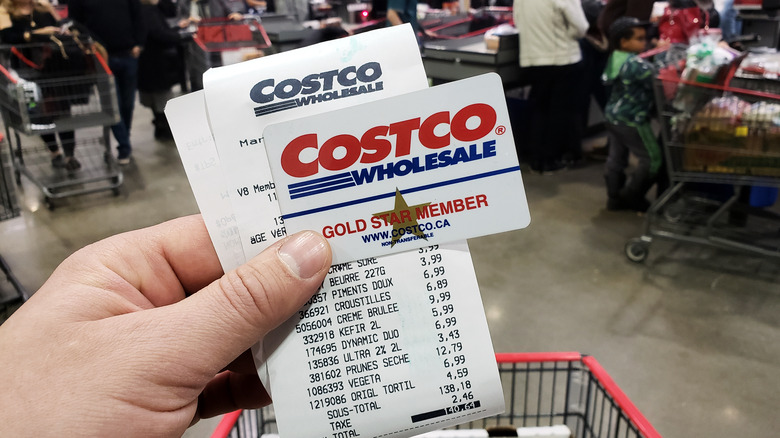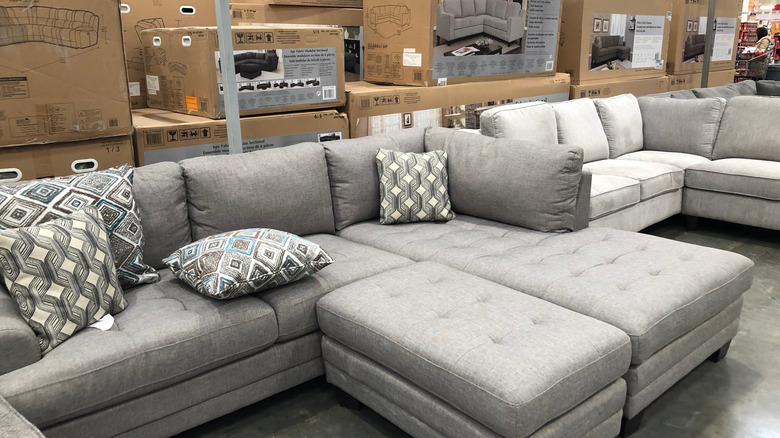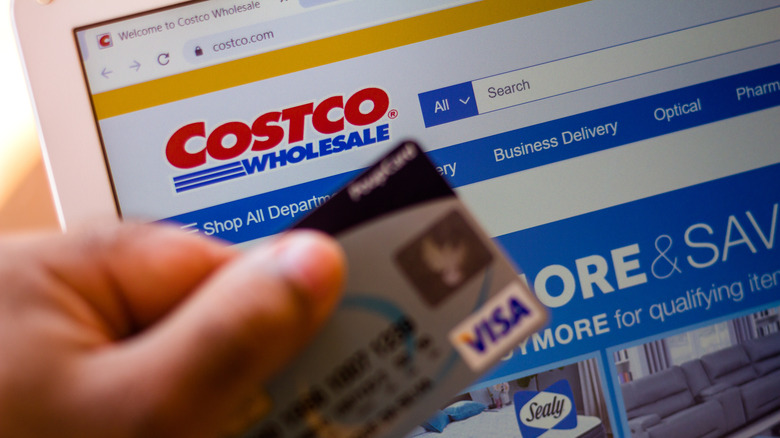Mistakes Everyone Makes When Shopping The Costco Home Section
Costco is a warehouse store known for its great deals. From its legendary sheet cakes to food sample stations, it's a destination for families usually rooted in the awesome availability of bulk grocery items. However, over the years, Costco has evolved into much more than a mega-grocery store. They sell everything from tires to vacation packages to Christmas trees, per Costco Travel. They also have a significant selection of home items available seasonally and year-round.
If you are looking to redecorate your home, deck the halls for the holidays, or nab a new couch for your living room, Costco could be a great potential spot to locate quality items. But there are some common mistakes many people make when it comes to purchasing home goods at this warehouse retailer. Read on to learn how to avoid them and make your Costco shopping trip as affordable and effective as possible.
Know your pricing
Since Costco's entire business model is selling stuff cheap and large, it's obviously the best place to look for home items that are usually quite pricey, right? Not always. It's important to research before purchasing any home item at Costco, especially larger, big-ticket pieces like furniture.
According to Babbletop, it's always a good idea to shop around for a deal. Get prices for the same item in at least three different stores, including Costco. Making this price comparison can save you a bundle because, quite honestly, sometimes better deals can be found at your local stores if they are having a good sale. Just because Costco has that reclining couch or big screen TV doesn't mean it's the most affordable option out there. Of course, sometimes Costco will win the price war — but don't you owe it to yourself and your family to do a little research first?
Understand Costco's pricing structure
One of the biggest mistakes people make when purchasing home items at Costco is not understanding how the company prices things. There's a whole secret language used for operational purposes that the average consumer can easily decode. According to ToughNickel, the ending on the price tag can make a big difference. If an item ends with ".97¢," that means it has been marked down. If you see this price on a home item, expect it to be a competitive price worth considering. You can even ask the store manager what the original price was to see if you are truly getting a good deal.
Another price communication to look for is an asterisk on the sign. If you see this, it means the product will not be restocked. This is common on holiday items but also on year-round home goods. Seeing this will help you make a more immediate decision as to whether or not to purchase. You can also ask the manager if they're willing to give you a discount as it is one of the last items available.
Look online and in the mail
Another mistake most people make is simply showing up at Costco, expecting what they see to be the best deal since the retailer is a discount warehouse. This actually couldn't be further from the truth, and there's another path that can save you money on home items. Check out Costco's website. First, it will save you time and gas to peruse the website and see what's available in the store, as well as a trip where you will end up blowing money on a multitude of other things you don't need once you are combing through those tempting aisles. Secondly, the website often has deals not mentioned in-store. When you think about it, there's hardly a point in going to Costco in person until you've done a proper search online for prices, inventory, and styles available.
Another mistake people make when they are shopping for home items at Costco? Throwing those coupon books away. You know the ones we're talking about — Costco sends them out with impressive regularity, and upon first glance, they just look like junk mail. But according to GOBankingRates, they are actually full of potentially valuable coupons – and this is especially true on seasonal home items and other time-sensitive products the store needs to sell off quickly.



